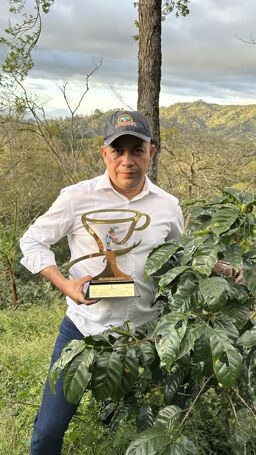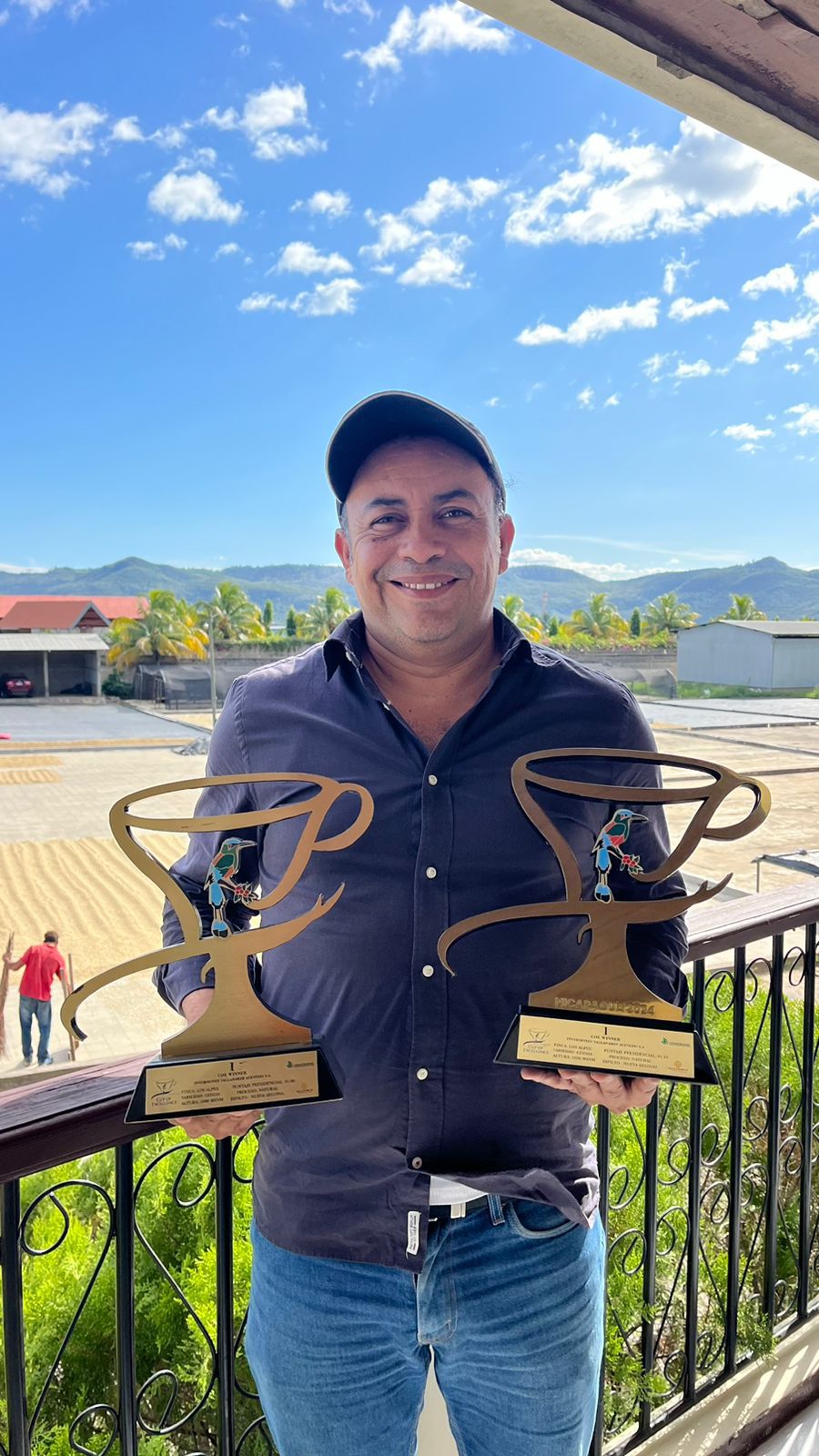This coffee takes its name from a typical Nicaraguan dish made from plantains.
Toston
Nicaragua - Nueva Segovia - Diplito - TOSTON - Red honey

Nicaragua - Nueva Segovia
Wählen Sie Ihre Ernte :
Aromatische Noten:
Spottpreis
€/kg
Do you know where the name Toston comes from?
Tostón is a blend created from farms in the Dipilto region, in Nicaragua. It's a red honey coffee produced using a mix of 70% Caturra and 30% from other varities as Maracaturra, Maragogype, Marsellesa and Catuaí. The coffee is named after a typical Nicaraguan dish made using plantain bananas called Tostón, which is a substantial, well-balanced dish, just like this coffee, which would make an excellent base for a blend.
Tostón coffee is created with the aim of offering a nice solid and homogeneous cup. The Dipilto region’s high altitude also gives the coffee an intricate and tangy character. It is a round and very well-balanced coffee. Full-bodied and chocolatey as an espresso, evoking caramel and chocolate as a filter coffee.
In order to develop different processes on the same farm, we offer this coffee in 3 processes: fully washed, red honey and natural. It is ideal to democratize the different processes with the same coffee.
Marketinginstrumente
POS, Postkarte, QR-Code-Verpackung usw, ...
Herkunft
Nicaragua Region
Nueva Segovia Terroir
Dipilto - Olman Valladarez
Hersteller
Art
Arabica Sorten
Caturra rouge,
Maracaturra,
Maragogype
Verfahren
Red honey
Trocknung
30 Tage drying beds
Verpackung
69kg - Jute bags
Höhe
1200 - 1500 Erntezeit
Dezember - April Erntemethode
Manuelle
Terroir Dipilto
The municipality of Dipilto is located in the department of Nueva Segovia, Nicaragua. This municipality is part of the Dipilto Coffee Designation of Origin, which also includes the municipalities of Macuelizo, Mozonte, and Ocotal. Its territory is predominantly mountainous. The average altitude ranges from 900 to 1,500 meters above sea level, with the highest point in the country being Cerro Mogotón at 2,106 meters above sea level. The region has approximately 1,850 producers who cultivate more than 4,500 acres of shade grown coffee, implementing agroforestry systems that contribute to environmental protection and the production of specialty coffees.

TreffenOlman Valladarez
Ein paar Worte zu Olman Valladarez
I’m the second generation of coffee farmer, I was born and raised in a coffee producing family. Today I am continuing what my father inherited from us. Due to financial problems in 2002, I had to make my own decision to stay with the family and face the current situation at that time. I had to do various businesses parallel to coffee to be able to heal the blow we had.
Our coffee at that time had quality problems and that is when I started to get advice to improve. That's when I got the idea that coffee has greater potential and in 2005 I discovered the different attributes that coffee can offer. In 2006 was my first participation in the Cup of Excellence contest and having obtained good results, I made more efforts to enter the specialty coffee segment.
In 2008 I integrated the so-called coffee processes into our project and in 2015 I began to experiment with various types of fermentation. A year later, in collaboration with a chemical engineer, I delved into this procedure, thus achieving greater precision in the qualities and processes of our products.
To date, I've participated in the Cup of Excellence competition more than 40 times and have won first place five times. In Nicaragua, we promote an event called The Best of Maragos, a competition where only varieties like Maragogype, Maracaturra, and Pacamara can compete, where I have also won first place. My first time winning first place in the Cup of Excellence competition was in 2005, and my last time consistently winning first place was in 2024. And there are many more to come. - Olman Valladarez
We've been working with Olman Valladarez for 10 years now. As a producer, his job is "to develop an eco-friendly business model, to reduce the use of chemical inputs but also to improve the forest and water around us". While he is proud to have taken over the family business and turned it into a benchmark for specialty coffee, he is now keen to have a positive impact on biodiversity.
Analyse auf das nächste Gramm auf- oder abgerundet
Detaillierte physikalische und sensorische Analysen Ihres Kaffees finden Sie im Qualitätsblatt mit:
- Dichte
- Die Luftfeuchtigkeit
- Wasseraktivität
- Farbmetrik
- Das Sieb
- Die Art der Mängel
- Die Partitur und ihre Details
- Das Aromaprofil (herunterladbar)
Kaffees von Olman Valladarez


Nicaragua
Olman Valladarez
Preis nicht verfügbar
Ausverkauft

We've been working with Olman Valladarez for 10 years now

Auswahl Equipment
Einzelpreis
€ ohne MwSt./Stk.
Ab xx Produkten
€ ohne MwSt./Stk.
Einzelpreis
€ ohne MwSt./Stk.
Ab xx Produkten
€ ohne MwSt./Stk.
Einzelpreis
€ ohne MwSt./Stk.
Ab xx Produkten
€ ohne MwSt./Stk.
Einzelpreis
€ ohne MwSt./Stk.
Ab xx Produkten
€ ohne MwSt./Stk.
Einzelpreis
€ ohne MwSt./Stk.
Ab xx Produkten
€ ohne MwSt./Stk.
Einzelpreis
€ ohne MwSt./Stk.
Ab xx Produkten
€ ohne MwSt./Stk.
Einzelpreis
€ ohne MwSt./Stk.
Ab xx Produkten
€ ohne MwSt./Stk.
